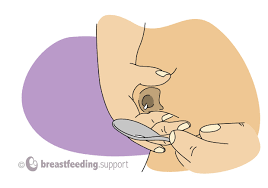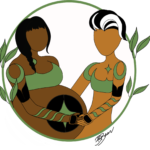I get lots of questions about the benefits of hand expression, the collection of colostrum, and the choosing and use of a breast pump . Below I share some answers to all of the above and the benefits and drawbacks.

Hand expression
Hand expression is one way to express milk from the chest or breast. It offers the benefits of being always available, warm and ready-to-feed. Hand expression can be especially beneficial in the early days postpartum when collecting colostrum. Colostrum is rich, thick and sticky and produced in small amounts. Precious drops can be lost in pump parts. Hand expressing into a spoon, cup or tube ensures collection of all the colostrum for immediate or later use. Collecting colostrum prenatally can be very supportive in preparing your body to produce milk, preparing for a premature or ill infant, or in the case of trouble with latching. Consult your primary care provider as it can stimulate contractions.
Using hand expression in the early days postpartum to collect colostrum and early milk can be very helpful! It has been associated with a milk supply increase of up to 40%.
It is also a very helpful skill in emergency or off-grid situations as it does not require equipment, sanitization or electricity.
Hand expression can be difficult for some with hand or wrist conditions, or can exacerbate carpal tunnel syndrome symptoms.
Check out this great video! https://med.stanford.edu/newborns/professional-education/breastfeeding/hand-expressing-milk.html

Pumping
Using a breast pump is one way to express milk from the breast or chest. There are many kinds of pumps to accommodate the needs of different individuals, and the use of a breast pump is familiar to many. There are single manual with a lever, single or double electric automatic, single and double electric wearable and milk collectors such as the Haakaa. The hands-free and wearable options are very convenient for some folks, allowing them to tend to their children, eat, drink or do tasks while pumping. It can be more efficient to use a double pump as you can empty both breasts at once, increasing output. Using a pump can also be less physically demanding for folks.
A breast pump can be a significant financial expense for many. Electric ones rely on electricity, and they require frequent washing and sanitizing of parts. Parts can also wear out with time and require replacement. Standard flanges are not the correct size for the majority of individuals. Your flange should be fitted correctly to the diameter of you nipple. Book a fitting! This will ensure proper and efficient milk transfer, and prevent damage to your nipple and areola.
Check out this great article on choosing a breast pump:



